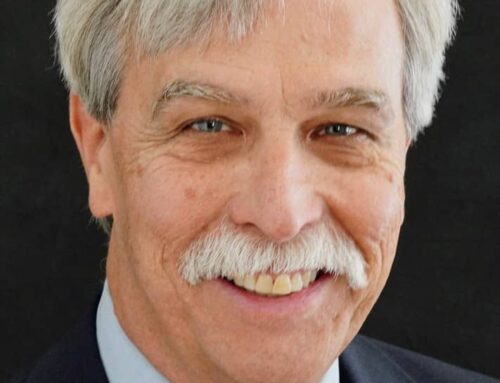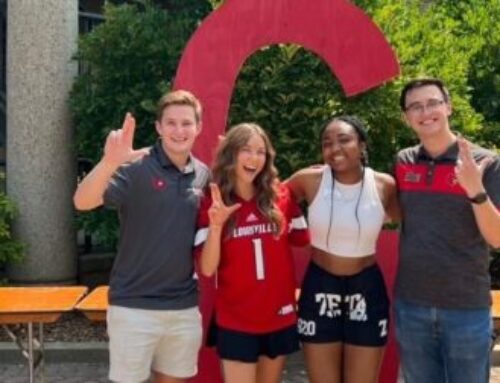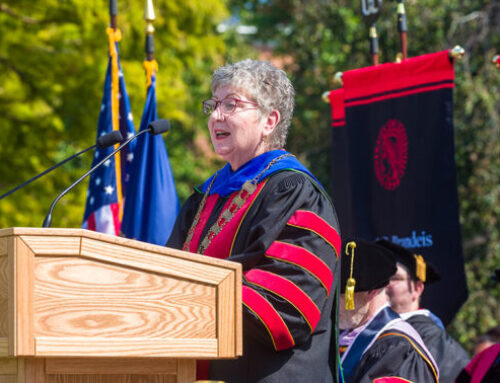by Sarah Rohleder —
Thursday, I visited the Bursar’s office, which was covered in hand-colored sugar skulls and multi-colored tissue paper banners. Later that day, the media storm blew up — and rightfully so — after several students noticed President James Ramsey provided and wore stereotypical Mexican garb at a staff party he and his wife hosted. But our Editor-in-Chief Olivia Krauth already wrote about that one.
This is a pattern. What does that say about our administration’s understanding of cultural appropriation?
It certainly says there is a lack of training and an abundance of privilege. At this point, I feel pretty confident in saying this university’s administration would know better than to paint on blackface for a costume or throw up gang signs while wearing red and blue bandanas and gold chains. They’ve been trained in cultural sensitivity to larger minority populations, but that’s not good enough.
Sugar skulls and paper banners may seem festive and harmless, but they shouldn’t be confused with Halloween decorations. They aren’t even related to Halloween. They are tightly tied into Dia Day Los Muertos — Spanish for Day of the Dead — a two-day celebration when Mexican people honor their deceased loved ones with alters that often include hand-decorated sugar skulls. This celebration is a deeply spiritual and familial one, not intended to be gentrified or commercialized by those who don’t understand or respect it.
In her article “Dear White People/Queridos Gringos: You Want Our Culture But You Don’t Want Us – Stop Colonizing The Day Of The Dead,” Aya de Leon wrote, “Like the Pilgrims, you have begun to take over, to gentrify and colonize this holiday for yourselves. I was shocked this year to find Day of the Dead events in my native Oakland Bay Area not only that were not organized by Chican@s or Mexican@s or Latin@s, but events with zero Latin@ artists participating, involved, consulted, paid, recognized, acknowledged, prayed with…Don’t bother to build an altar because your celebration is an altar of death, a ceremony of killing culture by appropriation.”
These decorations and costumes are beautiful and artsy, but using them only for those purposes is superficial and frankly, sort of supremacist — not to mention, hypocritical, as student Yazmin Martinez pointed out.
“It’s kind of ironic when it comes to Mexican culture appropriated and the relationship it has to anti-immigrant rhetoric,” Martinez said, “because you know the person you have in mind as being an immigrant is a Mexican, who are seen as low-wage, uneducated workers. It’s interesting to see how the dynamic changes.”
And before you come at me on Twitter and in the comment section of the Cardinal online about how my generation is too politically correct and thin-skinned, consider the loaded nature of this phrase “politically correct.” Think about these discussions not as thinning folks’ skin, but rather as defenses for those who have long been defenseless, and who have never had the luxury of wearing thin skin. It is education of ignorance to hold people accountable for the theft and exploitation of cultures they do not respect and stomping on their rights.
A U of L police officer noticed the now-infamous Halloween photo of Ramsey on my laptop screen and asked me if it was the photo “everyone’s making a fuss about.” When I confirmed, he said “people need to lighten up; it’s Halloween and it’s a costume.” When I argued, “It is not a costume — it is someone’s culture,” the police officer rolled his eyes. You can complain that people are deciding what you have the right to wear or decorate with or talk about, but in doing so, you fail to realize that you are defending those actions by deciding what someone else has the right to be offended by. That’s hypocritical.
U of L has gotten at least one thing right in regard to Dia de los Muertos, but it was, unsurprisingly, hosted by students. The Student Activities Board and the Latin American and Hispanic Student Association hosted a Dia de los Muertos celebration in the Red Barn on Thursday, ironically. The event intended to educate students on another culture’s celebrations, and it was supported by the Latino and Hispanic community. This is how we honor minority cultures, rather than thieving them when convenient.
But if I observed only the last two weeks of U of L’s behavior, I could detect a pattern. The minimizing of the Latino community at U of L is inarguably institutional when it spans multiple departments from the top down. Simply blaming Ramsey is not necessarily the best place to start. Even in the case of the photo, there were 19 other people present who could have said, “Umm, no, I really don’t think this is the best idea.” For a university who swears by its efforts to improve diversity, there sure weren’t many people of color at President Ramsey’s luncheon. Or on the Board of Trustees. Or in the top tiers of many departments at U of L that do not specifically affect minorities. While appearance is certainly not the only factor in diversity, it is one important place to start.
But I genuinely do not believe departments and administrators are out to hurt anybody; they simply have never, for the most part, been on the short end of the stick. Executive Director of Admissions Jenny Sawyer agreed that she is in the process of learning, but that the University needs a better understanding.
“I ask students all the time — and they’re primarily Hispanic students — ‘so are you undocumented?’ because I’m trying to make sure that I help them to know that they can pay in-state tuition and apply for deferred action, and I read this big article the other day that that’s considered being insensitive to ask someone if they’re undocumented because if they’re not and you’re wrong, you’re making this judgment that because they’re Hispanic, they might be in the country illegally,” Sawyer said. “We’ve had a lot of open conversation and raised sensitivity to the African American population, but I do think the Hispanic population is growing. We have some amazing leaders on our campus that are Hispanic/Latino. So I hope, and I do think that from this, we will have more conversations and we will learn more about being sensitive to different cultures.”
The damage has been done, administrators. Now it is up to you to have conversations and hear the students of populations who have gone unheard. If you truly want to solve your diversity problem, this is where you start: disbanding the institutionalized privilege afforded by upper-class white students and administrators.





